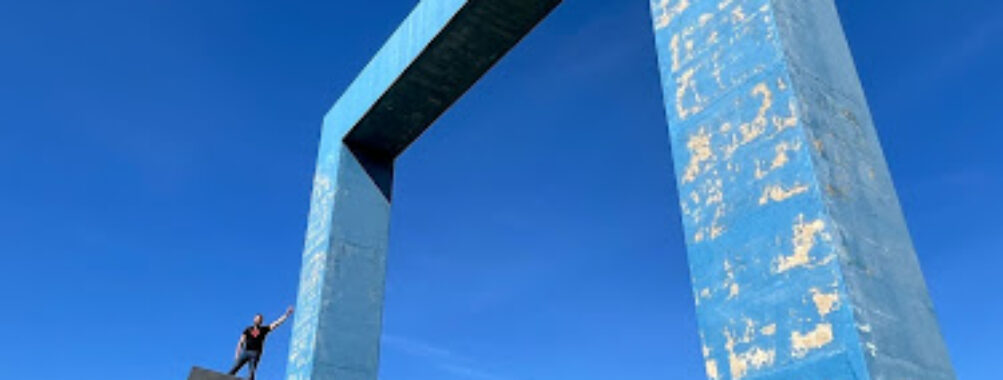
Monument to a Dead Poet
Table of Contents
The Monument to a Dead Poet in Messina, Italy, is one of those places that catches people off guard. Walking along the shoreline, you suddenly see this massive, square concrete frame, painted in a striking shade of blue, standing against the horizon. It looks almost surreal, like a doorway cut out of the sky itself, perfectly aligning with the ocean just beyond. Sitting on a pebbled beach with the waves constantly reshaping the stones at its base, the sculpture feels both modern and timeless, a little mysterious yet grounding in its simplicity. Some visitors are captivated by the stark contrast between the man-made structure and the natural sea, while others might scratch their heads, wondering what exactly the intention was. That, in itself, is sort of the charm—it leaves space for interpretation.
The work is more than just a visual statement. It’s a symbolic reminder of the transient beauty of human creativity, loss, and memory. While the bold geometry may seem minimal at first, the way it frames the Sicilian seascape brings an almost poetic quality to the experience, connecting life and death, the finite and the infinite. And if you happen to pass by at different times of the day, you’ll notice how the sunlight, shadows, and even the mood of the water completely change the “feel” of the monument. I once timed my stop right before sunset, and the square seemed to glow against the deep orange horizon—it gave me chills. Of course, come at noon and you’ll get a far more clinical, sharp-edged impression. That duality is what makes it feel alive, despite the stillness.
Travelers stopping here often debate whether it’s an artwork to admire quietly, a photo opportunity, or just a curious structure. In truth, it’s all of those things at once. There’s an odd stillness to it when the beach is quiet, mixed with the hum of waves and the occasional sea breeze rushing through the frame. Unlike a traditional statue or a finely detailed bronze sculpture, this modern installation relies on its scale and placement in nature to do the heavy lifting. Personally, I think that’s why reactions are so mixed—some travelers prefer ornate artistry, while others revel in raw simplicity. Either way, you don’t easily forget it.
Placed along the Messina coast, the monument also benefits from its surroundings. Messina is a city with layers upon layers of history, from Roman ruins to baroque churches and World War stories etched into the local fabric. Against this backdrop of deep Sicilian heritage, the blue square seems like an intentional interruption, reminding visitors that modern art and old tradition can share the same landscape. Whether you view it as a somber homage to poets and fallen voices, or merely as a bold piece of public sculpture, the monument stands as a site where you stop, think, and perhaps begin to see the sea with new eyes.
Description
Location
Places to Stay Near Monument to a Dead Poet
Find and Book a Tour
Explore More Travel Guides
No reviews found! Be the first to review!